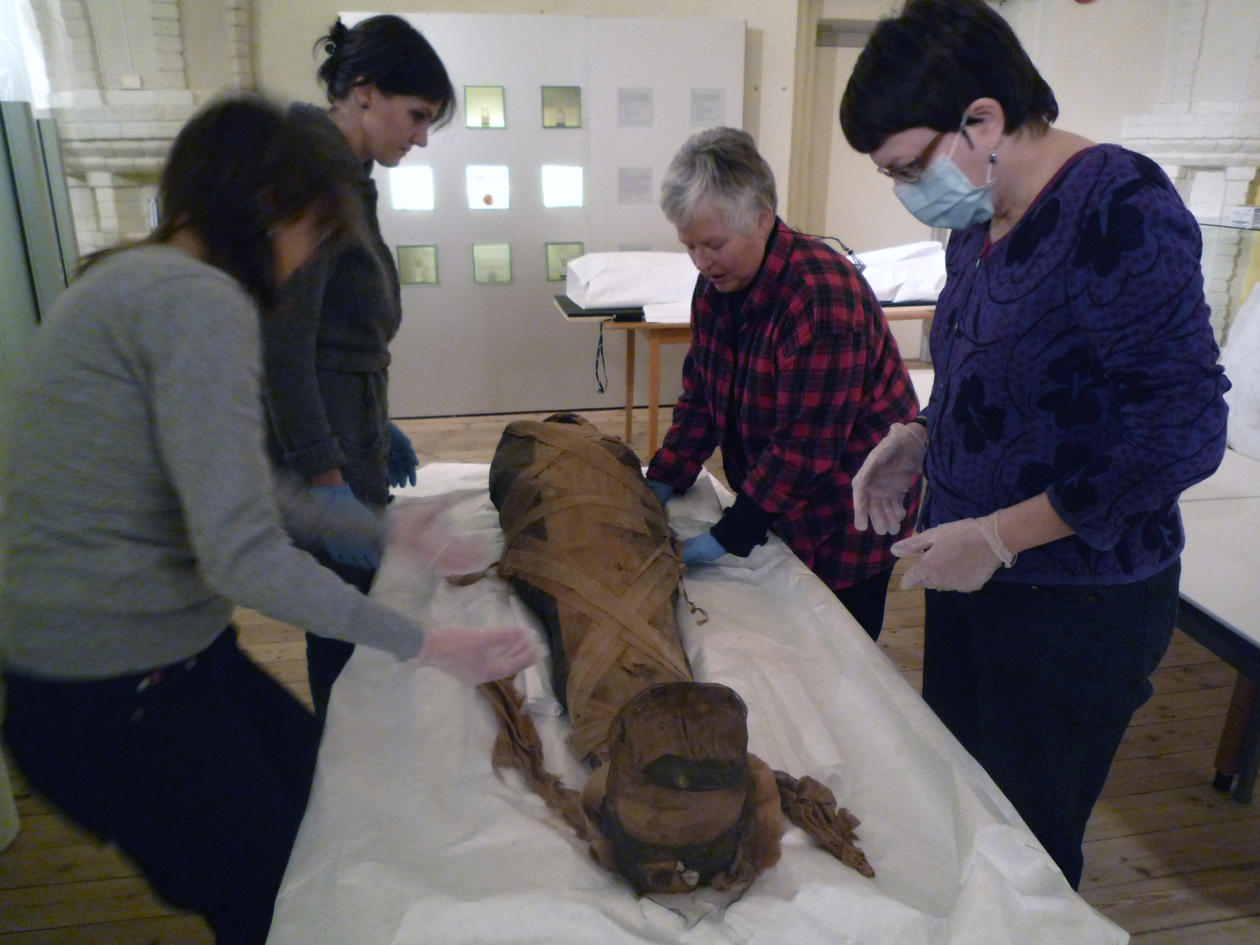Conservation section
The conservation unit is responsible for conservation and restoration of the object material of the archaeological, art and cultural history, and anthropological units at Bergen Museum. The material treated extends across a period from Early Iron Age up until today.
Main content
Archaeological objects comprise anything from magnificent weapons and jewellery to objects from everyday life like shoes and kitchen utensils.
The art and culture history collections also comprise the church art collection consisting of art of the Middle Ages like frontals, alter triptych/pieces and polychrome sculptures, and also objects from later periods. The collection of furniture and textiles in Norwegian rural communities with its extensive selection of folk art, range over decorative flower painted (Norwegian called rosemaling) furnishings to national costumes and other textiles. The town collection has furniture, paintings and textiles.
The Department of Social Anthropology’s collections comprise objects from all continents; for example Chinese porcelain, canoes from the Pacific Islands, and Inuit costumes.
Tasks
The Unit is currently staffed by nine persons, of which two are project staff. The conservation laboratory performs analyses and examinations of the object material. The staff of the laboratory have in recent years built up their expertise on conservation of rock art, and this a major part of their field of work. Other staff members have specialist knowledge within their own conservation areas: metal, wood/leather, textiles, paintings and polychrome sculptures. Copies of objects are also made.
The conservation and restoration work is documented photographically, and by means of reports describing conservation condition, technical examinations, analyses and treatment methods.
The work also includes method development and participation in the culture historical research based on objects as source material. The work of the unit is published.
The unit is in addition responsible for the control of climate and storage conditions in the exhibitions and storage facilities, and gives advice on conservation matters to other museums and the general public.
Recommendations from the Conservation Unit concerning the use of:
